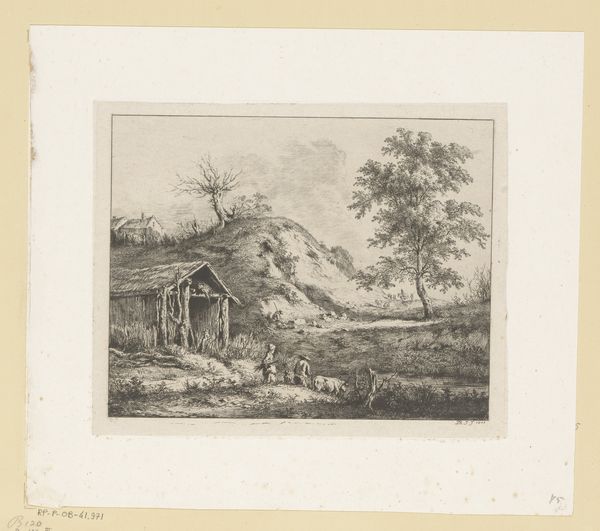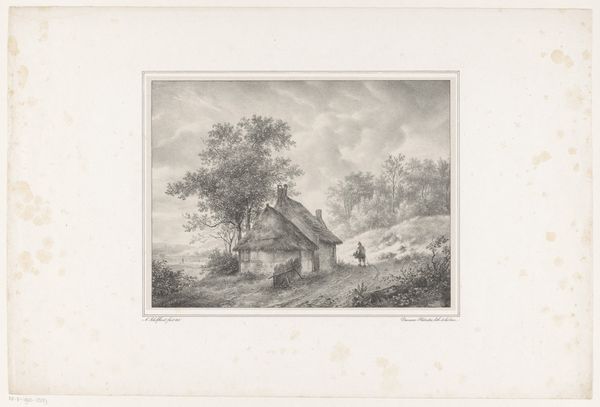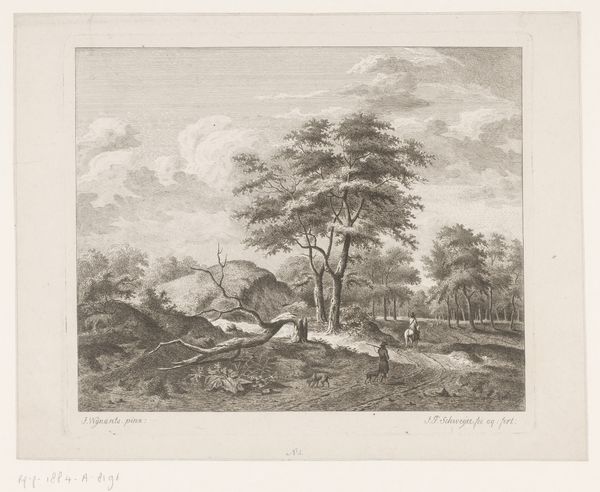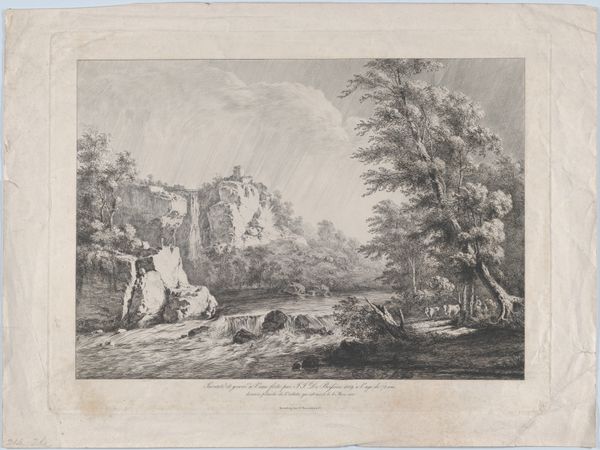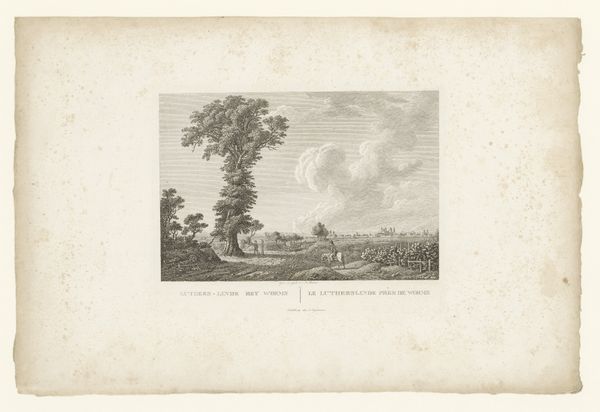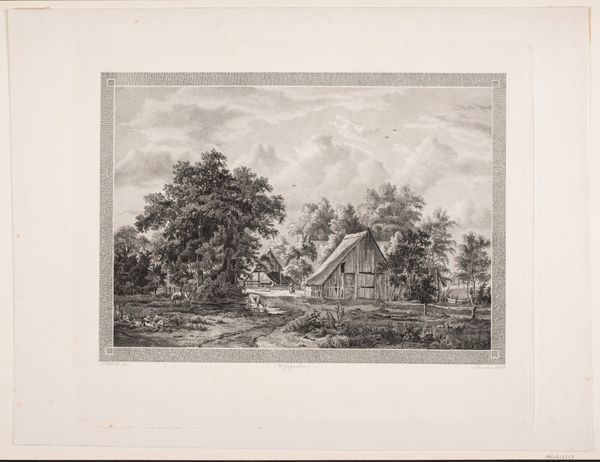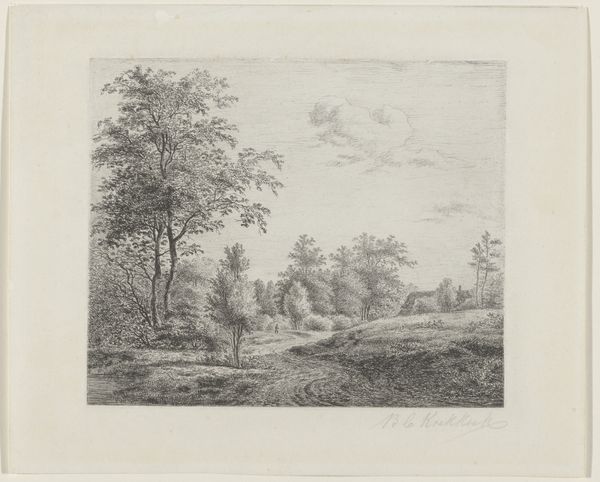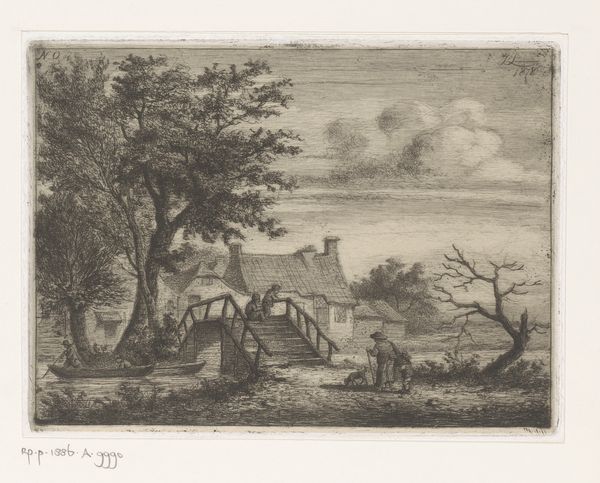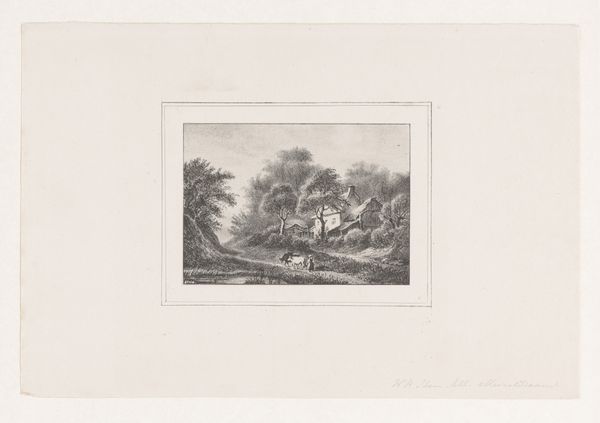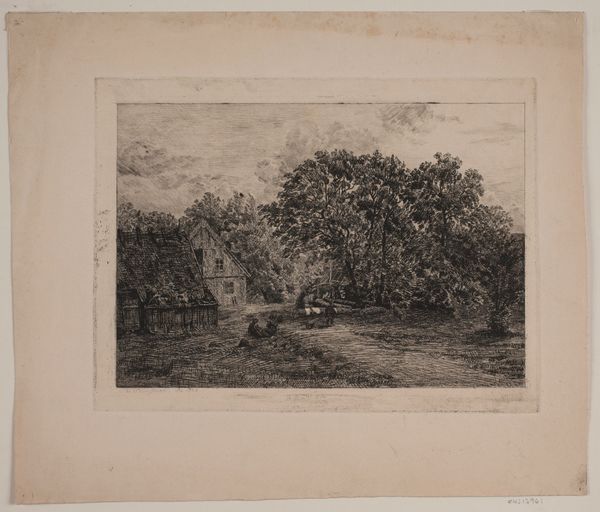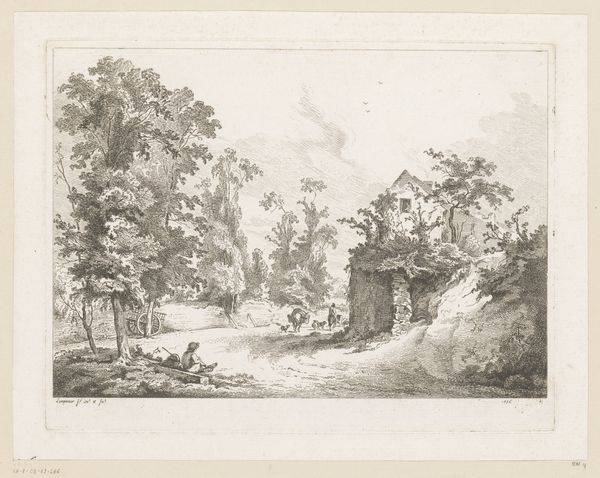
print, engraving
# print
#
landscape
#
engraving
#
realism
Dimensions: 215 mm (height) x 274 mm (width) (bladmaal)
Editor: Here we have "Farmhouse by a Sweep Well" created in 1831 by Søren Henrik Petersen. It's an engraving, offering a beautifully detailed look at rural life. What stands out to me is how meticulously he renders the textures of the thatched roofs and the foliage. What do you see in this piece? Curator: I'm particularly struck by Petersen's focus on the practical aspects of rural life, particularly how that levered sweep well visually dominates the composition. The engraving technique itself, involving painstaking labor, mirrors the effort inherent in this method of water extraction. The image documents a very specific technology. How does its presence complicate typical landscape imagery? Editor: It's true. The well suggests the labor involved, moving it beyond a purely aesthetic landscape. It acknowledges how humans interact with and shape the natural world, which feels significant for realism. Curator: Exactly! Furthermore, consider the social implications. Who would have relied on this technology? Was water readily accessible to everyone, or were there disparities? Even the act of engraving—a laborious process allowing for reproduction and dissemination—raises questions of accessibility and viewership. Are we meant to see a picturesque farm or observe a place of labor? Editor: That reframes my whole understanding! I hadn't considered the print medium itself as a reflection of accessibility and broader social structures. Thank you for sharing your perspective. Curator: And thank you for prompting this exploration of materials, labor, and context! I now see this artwork beyond its aesthetic charm.
Comments
No comments
Be the first to comment and join the conversation on the ultimate creative platform.
